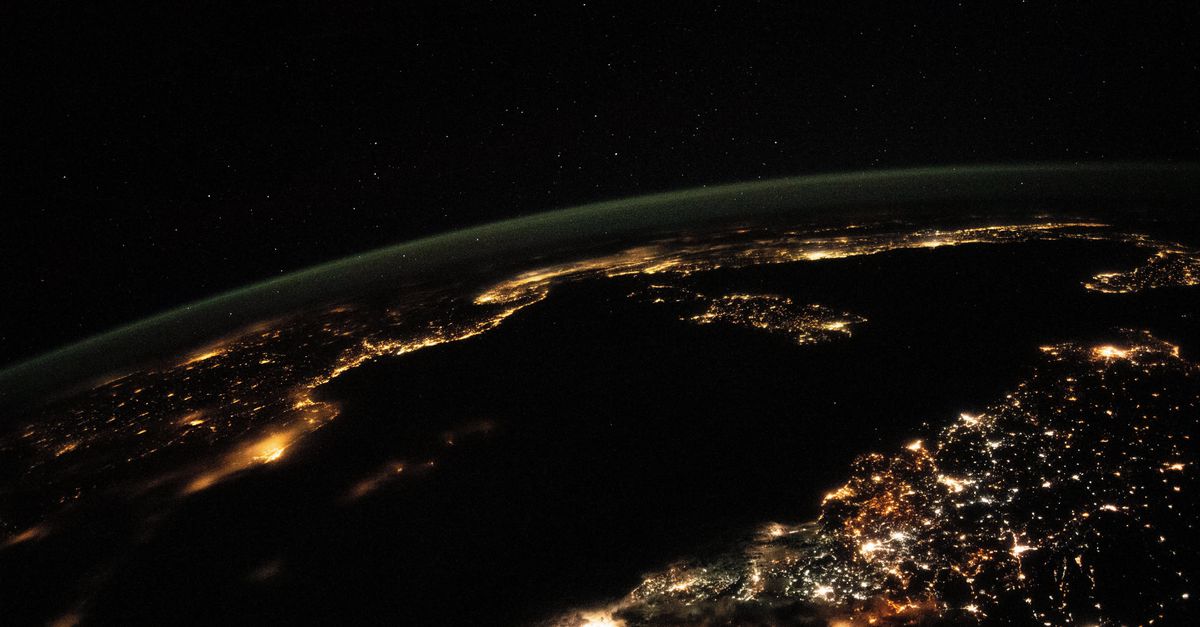European nights are getting bluer. In addition to the sharp increase in light pollution from artificial light at night, there is a shift from red-orange outdoor lighting to blue light. The researchers concluded that based on the photos of the astronauts, their results appeared on Wednesday in science progress.
The color shift indicates that more and more countries are using LED energy-saving bulbs. Its light is often bluer than traditional bulbs. “Our research shows that light pollution is increasing, even in places where it appeared to be declining according to previous measurements,” said astrophysicist Alejandro Sanchez de Miguel from the University of Exeter. This is because almost all previous research into artificial light at night has been done using satellite measurements and the satellite sensors used are blind to blue light.
Sánchez de Miguel and colleagues have long suspected that the increase in nighttime artificial light was even greater. For example, light pollution in the UK, for example, appears to be decreasing, while it has not. So they decided to take a look at the color photos taken by the astronauts from the International Space Station.
From warm red to cool blue
The researchers compared images of European Nights in 2012 and 2013 with those from 2014 to 2020. They then saw the color of the emitted light change from warm red to cool blue. This effect is most pronounced in the United Kingdom, Italy and Romania. This is where the use of LED lights has increased. Sanchez de Miguel: “Milan was the first major city in Europe to completely replace its street lights with LEDs, and in the UK, at the beginning of 2019, more than 50 percent of all public street lighting consisted of LEDs.”
The Netherlands, Germany, Austria and Belgium are more conservative. There is less color change between 2012 and 2020. Belgium in particular has a stunning orange glow. There are still many low pressure sodium lamps.
Artificial light has negative consequences for nature
Camille Spoilstra biology
Both the increase in artificial light at night and the shift to blue light are of concern to the researcher. “Light pollution doesn’t just mean that we hardly see any stars at night,” says Sanchez de Miguel. “Artificial light, especially blue light, has negative consequences for nature and human health.”
Camille Spoelstra, a biologist at the Netherlands Institute of Ecology (NIOO-KNAW), agrees: “For example, the biological clock of humans and animals reacts relatively strongly to blue light, which can disrupt the sleep rhythm. And the eyes of animals that are active at night, such as Mice, adapt to relatively blue background light at night. If outdoor lighting becomes bluer, they are exposed to ambient light more intensely, which makes them feel less safe because they are easier prey.”
Read about disruptive artificial light: Light is a vacuum cleaner for moths
According to Sánchez de Migue and Spoelstra, it would be best to reduce or not have outdoor lighting. And if lighting is required, choose a warm white light that is redder. This is also possible with LED lights. A cool white LED light with a relatively large amount of blue is often more energy efficient, but you can also create a warmer, redder LED light. Spoelstra: “Perhaps people should also learn to be less dependent on light.”
A version of this article also appeared in The Sep 15, 2022

Zombie specialist. Friendly twitter guru. Internet buff. Organizer. Coffee trailblazer. Lifelong problem solver. Certified travel enthusiast. Alcohol geek.

